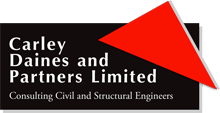Highway and drainage design involves the planning, engineering, and construction of roadways and associated drainage systems to ensure safe and efficient transportation and effective management of stormwater runoff.
Highway and drainage design typically requires the expertise of civil engineers, transportation planners, and hydrologists. It involves conducting detailed surveys, analyzing traffic patterns, considering environmental impacts, and complying with local regulations and design standards.
A professional service provided by Carley Daines & Partners is full highway and drainage design, to both private and adoptable standards.
This is frequently required when our clients (particularly Housing Associations and major house-builders) are proposing to construct new housing estates with associated new highways and drainage infrastructure.
The firm has worked extensively in providing innovative solutions for surface water disposal including the design of soakaways, swales, and attenuation systems, with particular experience in negotiating acceptance and adoption of these assets with the Environment Agency, statutory undertakers, and Lead Flood Authorities.
Here are some key aspects of highway and drainage design:
Highway Design:
- Alignment and Profile: Determining the alignment and vertical profile of the roadway, including horizontal curves, vertical grades, and cross-sections.
- Pavement Design: Select appropriate pavement materials and thickness to accommodate traffic loads and provide a smooth and durable surface.
- Geometric Design: Designing intersections, interchanges, ramps, and other roadway features to ensure safe and efficient traffic flow, taking into account factors such as sight distance, turning radii, and lane widths.
- Traffic Control: Incorporating traffic control devices such as signs, signals, and markings to regulate traffic movement and enhance safety.
- Roadside Safety: Designing appropriate barriers, guardrails, and clear zones to protect motorists and pedestrians from roadside hazards.
Drainage Design:
- Stormwater Collection: Designing a network of catch basins, culverts, and channels to collect and convey stormwater runoff from the roadway and adjacent areas.
- Stormwater Management: Incorporating best management practices (BMPs) to control stormwater quantity and quality, including detention ponds, infiltration systems, and sedimentation basins.
- Hydraulic Design: Calculating design flows and sizing drainage structures to ensure adequate conveyance capacity and prevent flooding or drainage system failures.
- Erosion and Sediment Control: Implementing measures to prevent erosion and sedimentation during construction and to protect receiving water bodies from pollutants.
- Water Quality: Designing treatment systems, such as oil-grit separators or biofiltration swales, to remove pollutants from stormwater runoff before it is discharged into natural water bodies.
- Utility Coordination: Coordinating the design and placement of utility infrastructure, such as water and sewer lines, with the highway and drainage systems.
